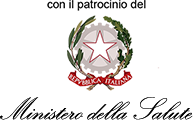Vaccination coverage is a widely used indicator as it provides essential information for health planning.
Vaccinations are a fundamental tool of prevention available to Public Health for the control of infectious diseases, their elimination or even worldwide eradication. The benefits produced by vaccinations are visible both in the individual and in the wider community; in fact for most diseases, obtaining high vaccination coverage makes it possible to contain the circulation of the micro-organism responsible and consequently guarantees protection to the community, even to those who are not vaccinated. The impact on the health of the population is therefore considerable in terms of limiting complications caused by the disease (morbidity, mortality, recourse to medical treatment, hospitalisation) and reduction of both direct and indirect costs.
Infectious diseases do not recognise geographical and / or political boundaries. Therefore all, but in particular those that can be prevented by vaccine, require a global and not merely local approach to their prevention and control: WHO’s great strives for the elimination or eradication of an infectious disease are often carried out on the basis of global vaccination strategies. These strategies necessarily require the elimination of ideological and political barriers, but also of economic and cultural obstacles, in favour of a collective and global approach in defence of the populations’ health. In order to have maximum effectiveness on the population, most vaccines must reach an adequate vaccination coverage. Vaccination coverage means the proportion of subjects vaccinated out of the total number of vaccination candidates. Vaccination coverage is a widely used indicator because it provides essential information for health planning; it can be measured using current information systems (vaccination registers) or with ad hoc sample surveys. The monitoring of vaccination coverage is included in the objectives of the National Vaccination Prevention Plan (PNPV) for the three-year period 2012-2014 (approved with the State-Region Agreement of 22 February 2012 and published in the Ordinary Supplement of the Official Journal of 12 March). In Italy, the PNPV represents the reference document in the field of vaccination. Currently, the data relating to the vaccination activities for the calculation of the coverage in childhood are sent by the Regions to the Ministry of Health, using a specially prepared detection model. These data are then published by the Ministry.
Consult the vaccination coverage data
Consult the vaccination coverage for children and adolescents



